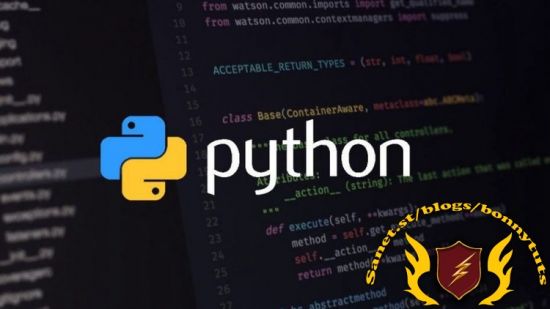
Published 7/2023
Created by Dr. Geeta Sable
MP4 | Video: h264, 1280×720 | Audio: AAC, 44.1 KHz, 2 Ch
Genre: eLearning | Language: English | Duration: 18 Lectures ( 4h 7m ) | Size: 1.65 GB
Python Programming Basics
What you’ll learn
Complete knowledge about basics of Python
Coding in Python
Tools required for python programming
Python Basic syntax
Requirements
basic computer knowledge
Description
1. Introduction to Python LanguageWhat is Python, Uses of Python Programming Language / Python Applications, Python for Software development, Python for Networking, Python for Automated Testing, Features of Python Programming Language, Implementations of Python, and Python career opportunities.2. Download & Install PythonDownload your operating system compatible Python Interpreter, install Python, set environment variable, customize Python shell, write & execute Python programs using Interactive mode and script mode. Python PyCharm or IDE, set Python for PyCharm IDE, configure PyCharm IDE, write & execute Python programs.3. Python Language SyntaxModes of Programming in Python, Interactive mode programming, Script mode programming, Creating Python program file, Python Identifiers, Python keywords, Lines and Indentation, Spilt Python statements, Join Python Statements, Writing code blocks, Comments in Python, and Quotation in Python.4. Python Keywords and IdentifiersPython keywords or Reserved words, Python keywords define the syntax and structure of the Python language, Python keywords are case sensitive, Python literals (True, False, Null), Python Identifiers, class names, variable names, function names, method names, and Identifier naming rules.5. Python CommentsPurpose/use of comments in Computer Programming, Comments for Understanding Python code, Python Comment Syntax, Python Single line comment, Multiline comment in Python, and writing Python comments.6. Python VariablesWhat is Variable?, Declaration of Variables, Assign Values to Variables, Initialization, Reading, Variable naming restrictions, and Types of Python Variables.7. Python Data TypesWhat is Data Type?, Implicit Declaration of Data Types, Python Numbers (Integers, floating-point numbers, and complex numbers), Python Strings, Python boolean data type.8. Python OperatorsPython Arithmetic, Comparison/Relational Operators, Increment Operators, Logical operators, Python Identity Operators, and Python Operators Precedence.9. Python Control Flow – Decision Making(Decision Making / Conditional Statements in Python, Simple If Structure, if-else structure, if elif structure, and nested If Structure. Execute a block of Statements when the condition is true, Execute a block of Statements when a compound condition is true, Execute a block of Statements when the condition is true otherwise execute another block of Statements, Decide among several alternates(elif), and Execute a block of Statements when more than one condition is true (Nested if))10. Python Control Flow – Looping((Python Control Flow Statements, Python Loop Statements. Python while loop, Python for loop, Python range(), Python Nested Loop Structures, and Inserting conditions in Loops and vice versa.))11. Python Control Flow – Branching(Python Flow Control – Branching Statements, A branching statement is a statement that determines whether other statements will be executed. Python Branching Statements – break, continue, pass)12. Python Numbers(Python Number data types are for storing numeric values, Python supports integers, floats, and complex numbers.)13. Python Strings(String is a sequence of characters written in single quotes or in double quotes or in three double quotes. The string may have Alphabets, Numbers, and Special Characters. Operations on Strings, Finding String length, Concatenating Strings, Print a String multiple times, Check whether the String has all numeric characters?, and Check whether the String has all alphabetic characters?.)14. Python Lists((Python Data Structures, Create Python Lists, Update Python Lists, Delete Elements from Python Lists, and Built-in Functions & Built-in Methods for Python Lists.))15. Python Tuples(Tuples are sequences, just like lists. The differences between tuples and lists are, the tuples cannot be changed unlike lists and tuples use parentheses, whereas lists use square brackets.)16. Python Sets(A Python set is a collection that is unordered and unindexed. In Python sets are written with curly brackets.)17. Python Dictionaries(A dictionary is a collection that is unordered, changeable, and indexed. In Python dictionaries are written with curly brackets, and they have keys and values.)18. Python Arrays(Array is a container that can hold a fixed number of items and these items should be of the same type. Python does not have built-in support for Arrays, but Python Lists can be used instead.)19. Python user-defined Functions(In all programming and scripting languages, a function is a block of program statements that can be used repetitively in a program. It saves the time of a developer. In Python concept of function is the same as in other languages. There are some built-in functions that are part of Python. Besides that, we can define functions according to our needs.)20. Python Built-in Functions(Python has several functions that are readily available for use. These functions are called built-in functions.)21. Python – ModulesA module allows you to logically organize your Python code. Simply, a module is a file consisting of Python code. A module can define functions, classes, and variables. A module can also include runnable code.
Password/解压密码www.tbtos.com
转载请注明:0daytown » Python Programming from Scratch Dr. Geeta Sable